×


We have detected your country as:
Please click here to go to the USA website or select another country from the dropdown list.

{image_1}More than 19,000 olim [Jewish immigrants] chose to make their home in Israel in 2010. There are significant increases in the numbers of olim from Latin America, Belgium, Australia and New Zealand, Switzerland, and even India.
Continue Reading »
{image_1}In an unstable business environment, when US companies are scaling back and weathering bad times, Intel has made a surprising business move. The chipmaker announced in January that it will invest US $2.7 billion in its Israeli plant in southern Israel, which will produce next-generation 22-nanometer chips.
Continue Reading »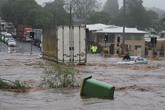
You might ask, “Why should I send money to Israel to feed the needy, when there are so many problems all around me?” Many of our faithful supporters are from countries facing disasters. In Japan, a 9.0 earthquake and subsequent tsunami and nuclear threat have devastated the country. (We have yet to hear from many of our Chai leaders there, who lead groups in prayer for Israel.) Floods have also devastated Australia and South Africa, and New Zealand is still having aftershocks from recent earthquakes.
{image_2}
High unemployment in the UK and the USA is causing concern, and many college-educated Japanese young people are unable to find work. The world is rife with truly worthy causes. If you look at the global situation with natural eyes, you might not think to send a donation to Israel. But, if you are seeing the world through God's eyes, with your spirit man, then you most likely are already writing a check.
Continue Reading »
{image_1} Worldwide, the need for clean drinking water is overwhelming. Only 0.74% of the world's water is safe for drinking, and some 2 billion people either lack access to sufficient quantities of water or are supplied with unsafe water. It is estimated that about 1.6 million children under the age of five die from drinking untreated water in developing nations.
Continue Reading »
{image_1}The first software in the world to receive an endorsement from the Global Eco-labeling Network (GEN) was developed by Preton, a Tel Aviv startup that provides print optimization software for business and home users. Last year, a leading independent lab analyst in the printing and imaging industry dubbed Preton “the most recommended solution for saving money and going green.” Independent investigation verified the company's claim of nearly 70% cost savings. The patent-pending software optimizes the use of toner and ink and provides a printing management system.
Continue Reading »
{image_1} Each year, it is estimated that several thousand epilepsy patients in the United States alone will die or suffer severe brain damage from an unattended epileptic seizure. There is an urgent need for patients to be able to notify caregivers about the onset of a seizure. Studies have shown that getting care during a seizure can prevent many more serious problems. However, someone in the grip of an attack, particularly a child, cannot call for help.
Continue Reading »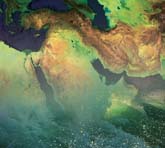
While a number of nations in the Middle East typically receive extended news coverage, Tunisia wasn’t one of them. However, the popular protests in the Arab country that culminated in deposing the nation’s autocratic ruler have resulted in a tidal wave of uprisings and political turmoil making headlines from Egypt to Iran—and many places in between. Even Israel, the United States, and Europe have found themselves in the news regarding the Middle Eastern protests, as the toppling of dictatorships has far-reaching consequences in an already explosive region.
Continue Reading »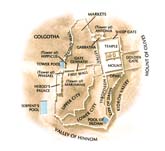
{image_1}After seven years of clearing large amounts of debris, the largest water channel from the Second Temple Period has been completed in the Old City of Jerusalem. The route of this channel follows the Tyropoeon Valley. The channel is located beneath the main paved and stepped road that traversed Jerusalem in those days. The road passed next to the Western Wall of the Temple Mount in the north and down to the Siloam Pool in the southern portion of the City of David (at the end of Hezekiah’s Tunnel).
Continue Reading »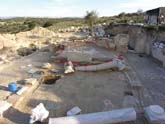
| {image_1} | |
| {image_2} | |
| {image_3} | |
| {image_4} | |
| {image_5} |
Guns and archaeologists are not a normal mix, but because of antiquities theft—a lucrative business here—the Israel Antiquities Authority (IAA), in 1985, created a theft unit that packs guns. Like other police and the military, these special “police” do ambushes, stake-outs, interrogations, and even use night-vision binoculars in their efforts to catch culprits red-handed.
Continue Reading »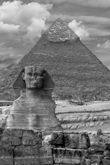
{image_1}The story goes that an Israeli army chief of general staff once came to his headquarters and announced that he had some good news and some bad news. The bad news was that Egypt now has top-of-the-line, sophisticated U.S. weaponry. The good news was…that Egypt has top-of-the-line, sophisticated U.S. weaponry. American military support—and the spare parts to keep the equipment running—comes with conditions attached, including that they aren’t used against Washington’s Israeli ally. Nevertheless, Israel never abandoned its doctrine to maintain forces capable of fighting a two-front war, even if it hadn’t faced Egypt on the battlefield for over 37 years and has formally been at peace with it since 1979.
Continue Reading »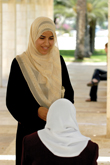
| {image_1} |
WASHINGTON—The future of Jerusalem is considered one of the core issues in Israeli–Palestinian negotiations and one of the most significant obstacles to a permanent agreement between the two sides. However, it appears that on the Palestinian side, those who live in Jerusalem have already made their decision on the matter—and the Palestinian Authority leadership in Ramallah may not like it.
Continue Reading »
{image_1}Tel Aviv has managed to escape the missile threat in the last two wars with Lebanon and Gaza, but with terrorists in both regions having acquired more advanced missiles, the second-largest city in Israel could be hit by dozens of missiles in the next war, according to Haaretz newspaper. The commander of the Dan region in the Israel Defense Forces Home Front Command, Col. Adam Zussman, told Haaretz in an interview regarding Tel Aviv, “Under any war scenario, it will be hit by a large number of missiles, missiles that are precise and lethal. However, our preparedness to deal with such missiles has also improved.”
Continue Reading »All logos and trademarks in this site are property of their respective owner. All other materials are property of Bridges for Peace. Copyright © 2025.
Website Site Design by J-Town Internet Services Ltd. - Based in Jerusalem and Serving the World.